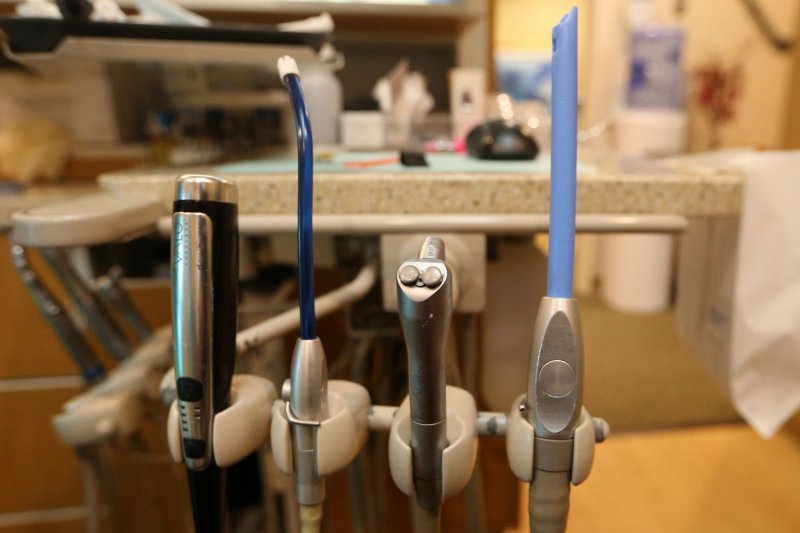THIRD WORLD USA
One-third of U.S. adults went without dental care, even before pandemicBy Steven Reinberg HealthDay Reporter

In 2019, a third of adults under 65 hadn't had a dental exam or cleaning in the past 12 months, a new study found, Photo by Bill Greenblatt/UPI | License Photo
Millions of American adults haven't seen a dentist in at least a year, a new U.S. government health survey reveals.
In 2019, before the coronavirus pandemic made dental visits difficult, a third of adults under 65 hadn't had a dental exam or cleaning in the past 12 months, according to the report from the U.S. Centers for Disease Control and Prevention.
And the problem was worse in rural America, the National Health Interview Survey showed. The authors suspect the reason is easy to explain.
"It was beyond the scope of study, but we kind of assumed there are fewer healthcare providers in the rural areas, compared to urban areas, so there's less access to dental care in rural areas," said study co-author Robin Cohen, a statistician at CDC's National Center for Health Statistics.
RELATED Study: 1 in 4 dentists has faced physically aggressive patients at work
Income and race also underpin the results, Cohen said.
The survey found:
In 2019, 65.5% of U.S. adults saw a dentist in the past 12 months.
More adults in urban areas than rural areas saw a dentist (67% versus 58%).
In both cities and rural areas, women were more likely than men to have visited a dentist in the past 12 months.
In urban areas, White adults (70%) were more likely than Hispanic adults (59%) or Black adults (62%) to have seen a dentist.
In rural areas, White adults (59%) were more likely than Hispanic adults (46%) to have had a dental visit.As income increased, so did the odds of seeing a dentist. And that was true in both rural and urban areas.
Dr. Jane Grover is director of the Council on Advocacy for Access and Prevention at the American Dental Association in Chicago. She said staffing shortages are a key contributor to access issues in rural America.
RELATEDCracked teeth another coronavirus scourge
"They may not have the staffing that many urban areas have -- I'm talking about the number of dental assistants and dental hygienists," Grover said.
Cost is another barrier to care, Grover said. Low-cost clinics can help in urban settings, and some clinics charge on a sliding scale based on patients' ability to pay.
In rural areas, these clinics can be few and far between.
Grover said more needs to be done to make dental care available to folks who can't afford it, no matter where they live. This includes involving dental students who can help provide services at little or no cost.
Grover said dentists can also work with pediatricians and primary care doctors to help patients get oral care.
"Dentists are health professionals that can not only address issues of the mouth, but can also offer connections and guidance for other aspects of your health," Grover said, emphasizing that dentists today do much more than clean teeth and fill cavities. A modern-day dentist realizes the mouth is connected to the rest of the body, she said.
"Many dentists have close working relationships with family doctors and pediatricians," Grover said. "Integrated care is really an accepted and embraced practice today as never before."
Regular dental visits are also important because conditions can be treated before they become serious and involve more time and expense, Grover noted. While many Americans avoided going to the dentist during the pandemic, she said care is now getting back to normal.More information
For more on dental health, see the American Dental Association.
SOURCES: Robin Cohen, PhD, statistician, National Center for Health Statistics, U.S. Centers for Disease Control and Prevention; Jane Grover, DDS, MPH, director, Council on Advocacy for Access and Prevention, American Dental Association, Chicago; U.S. Centers for Disease Control and Prevention, NCHS Data Brief, July 7, 2021
Copyright © 2021 HealthDay. All rights reserved.

No comments:
Post a Comment